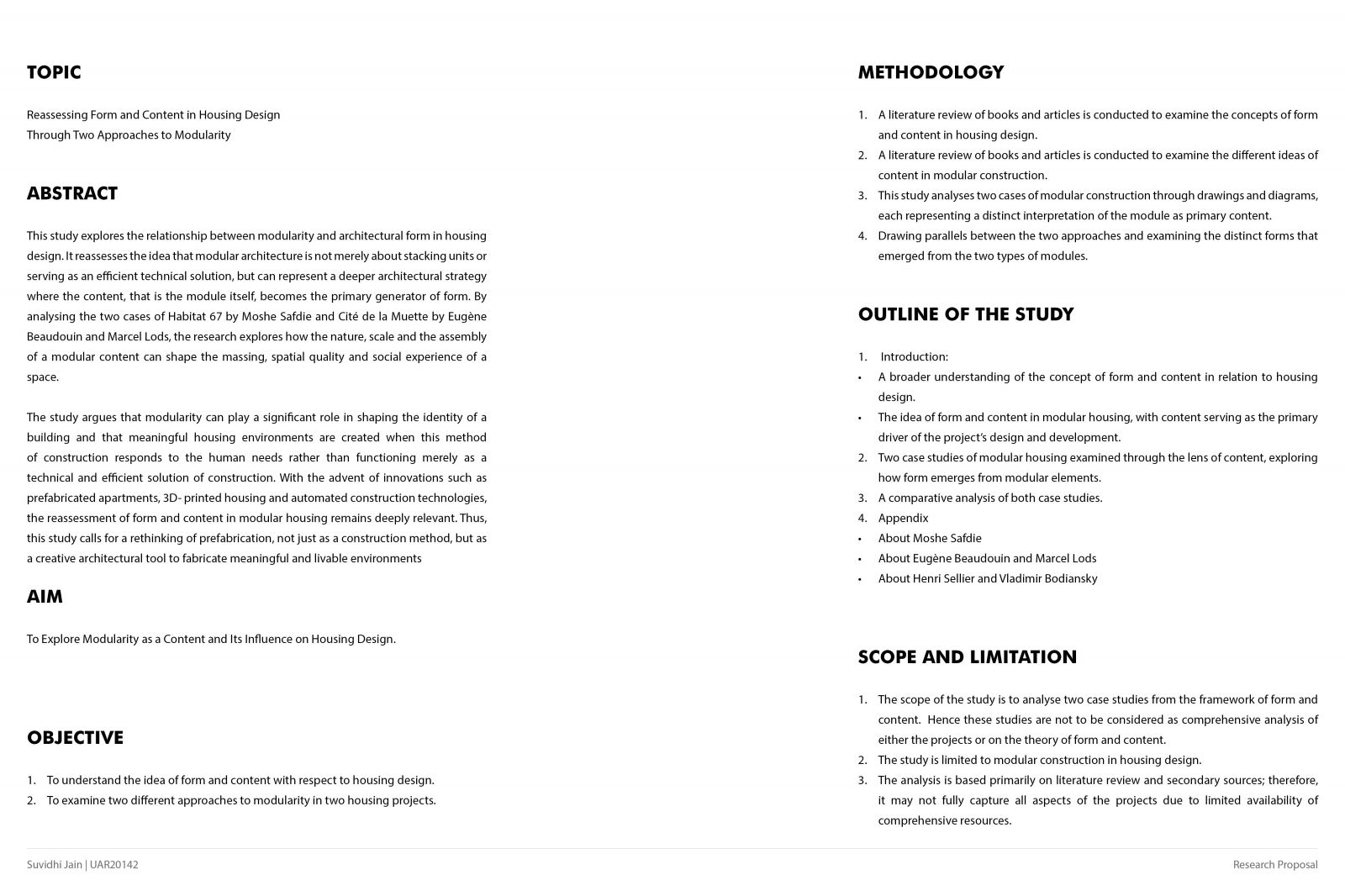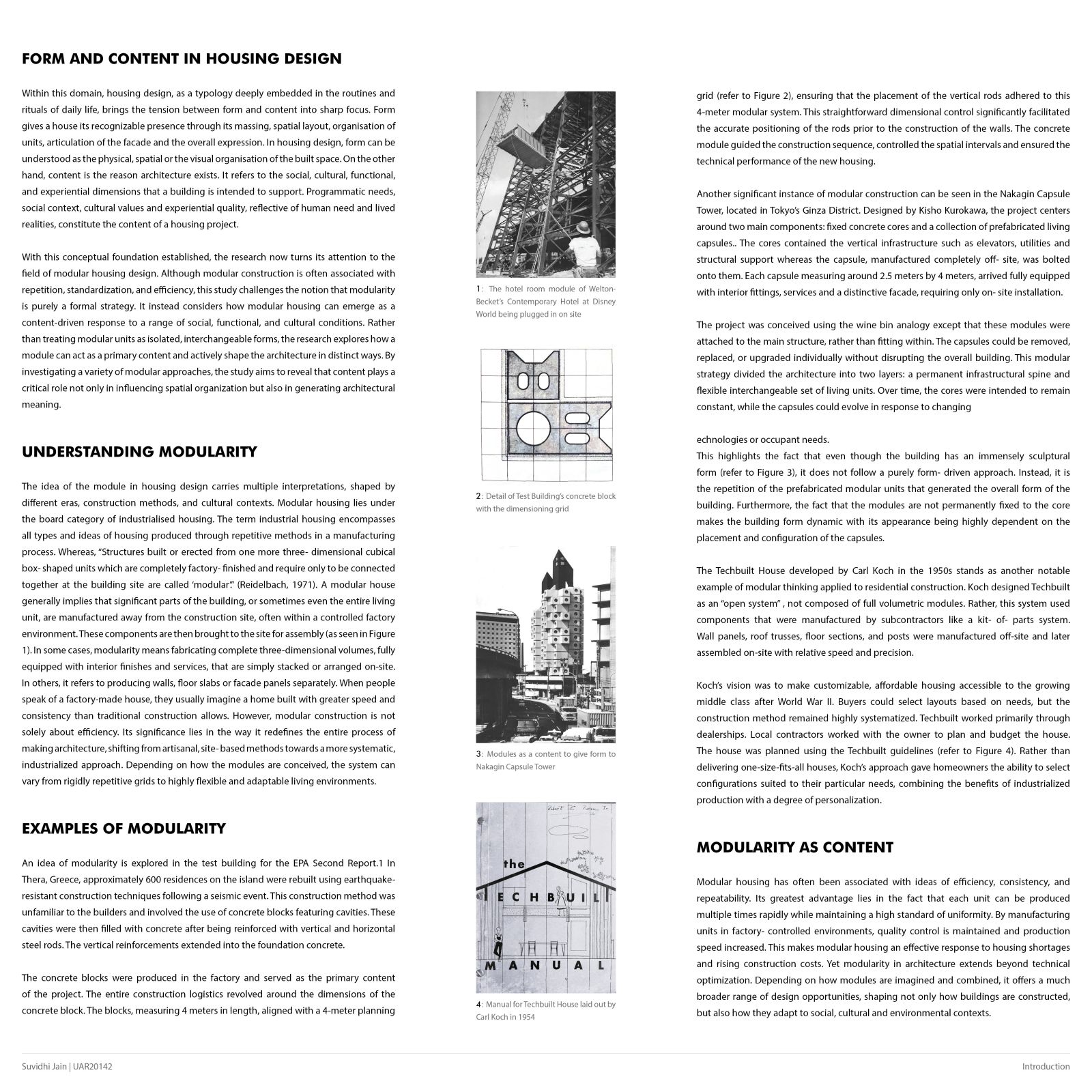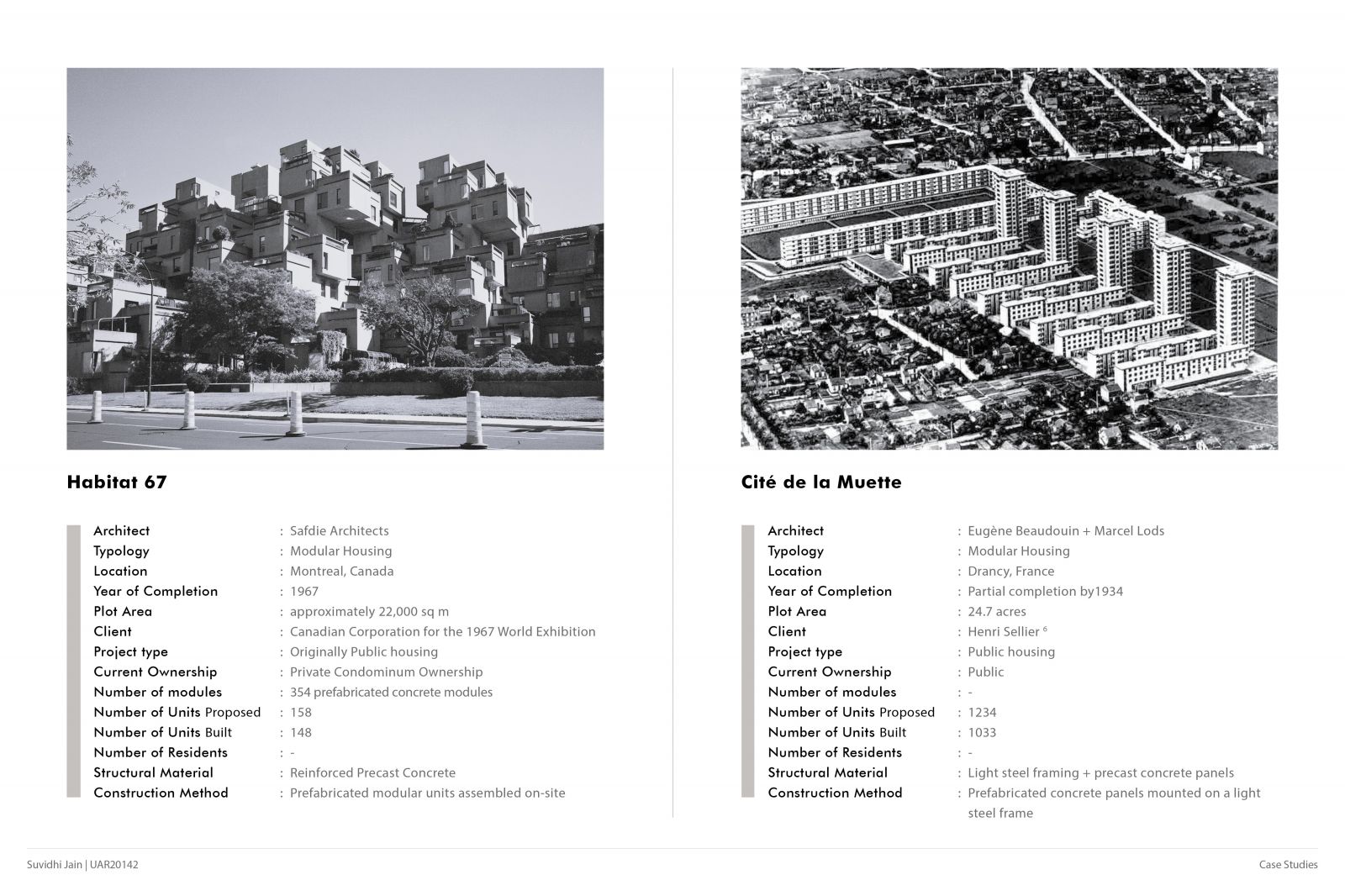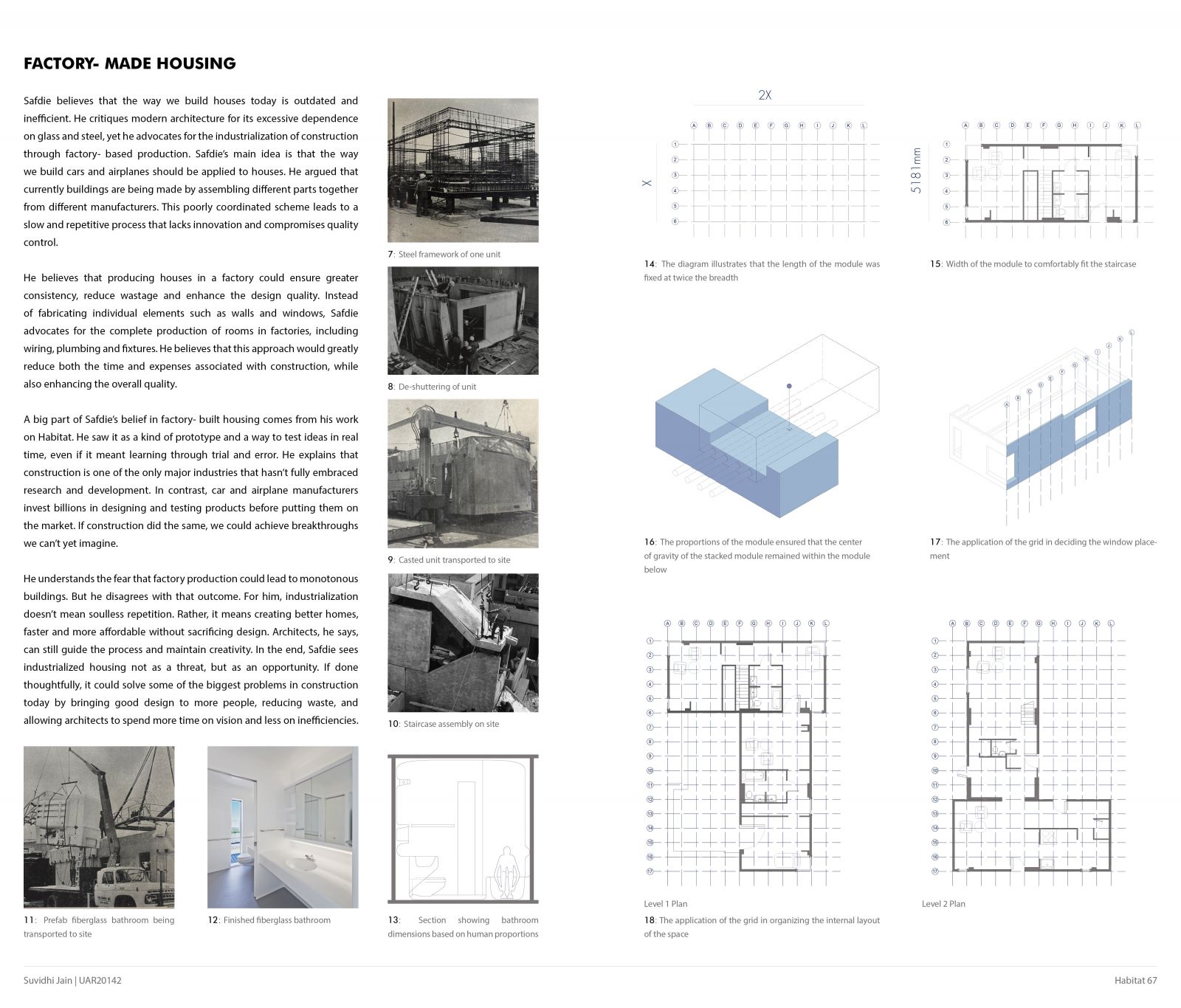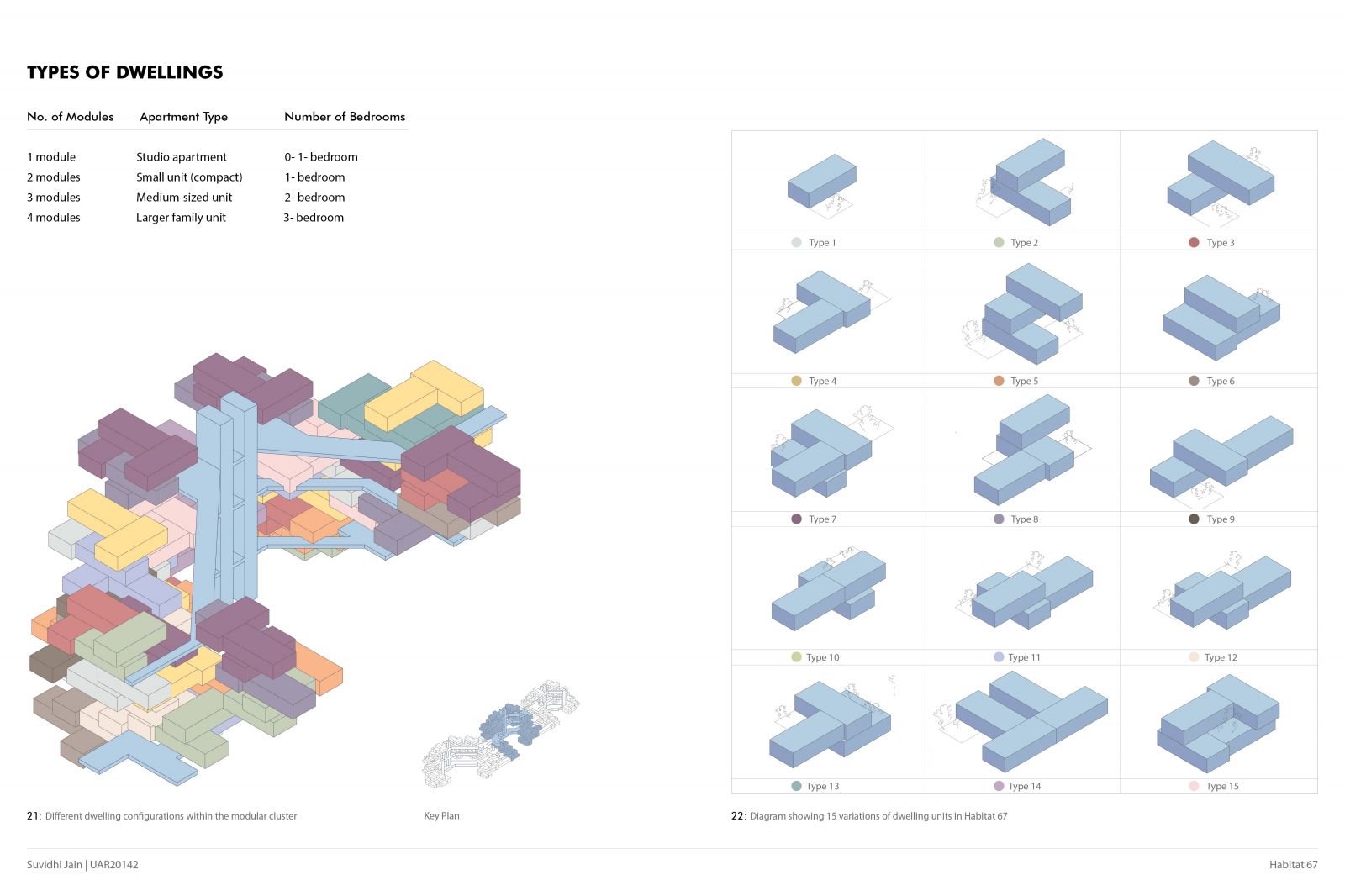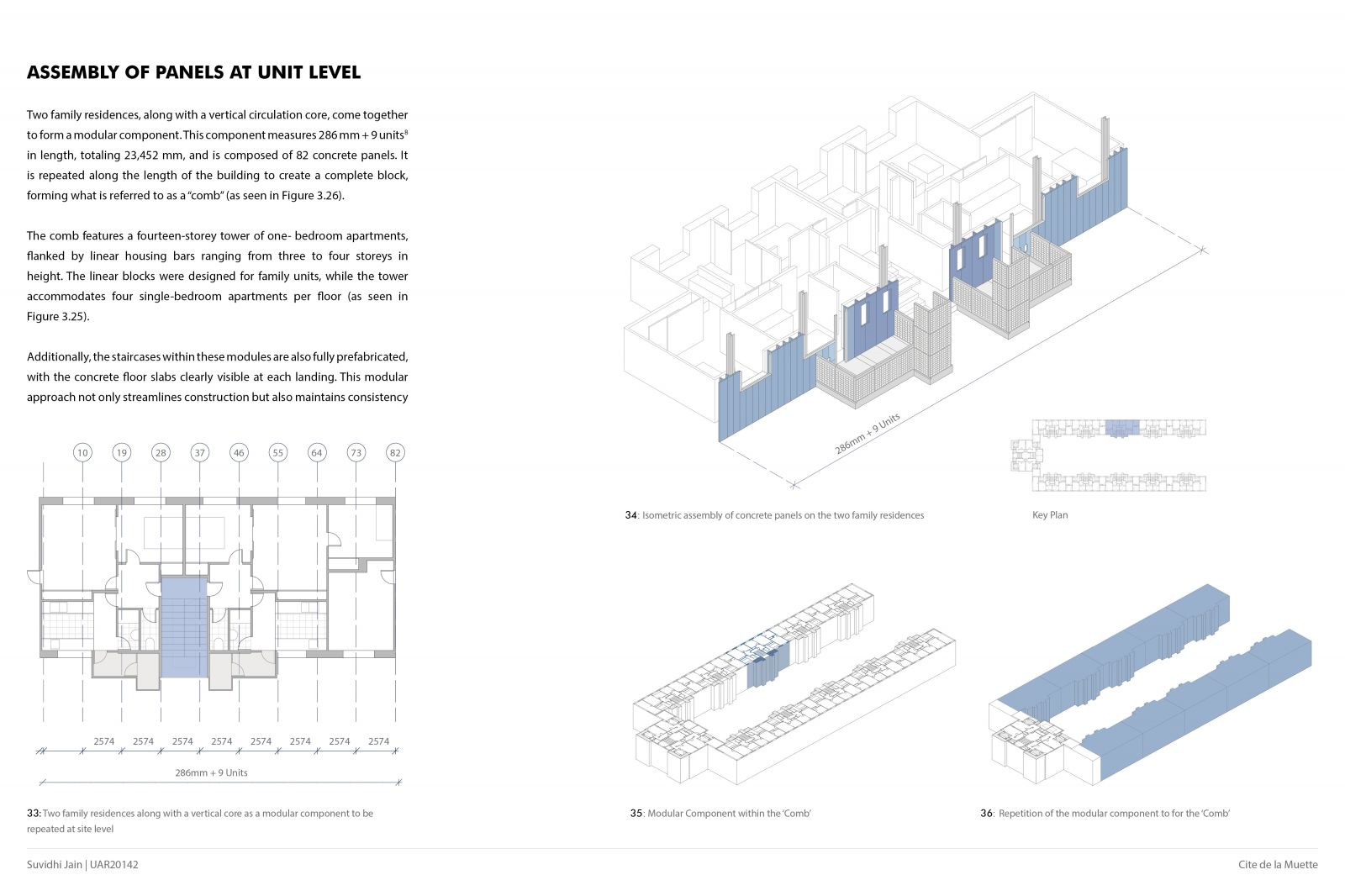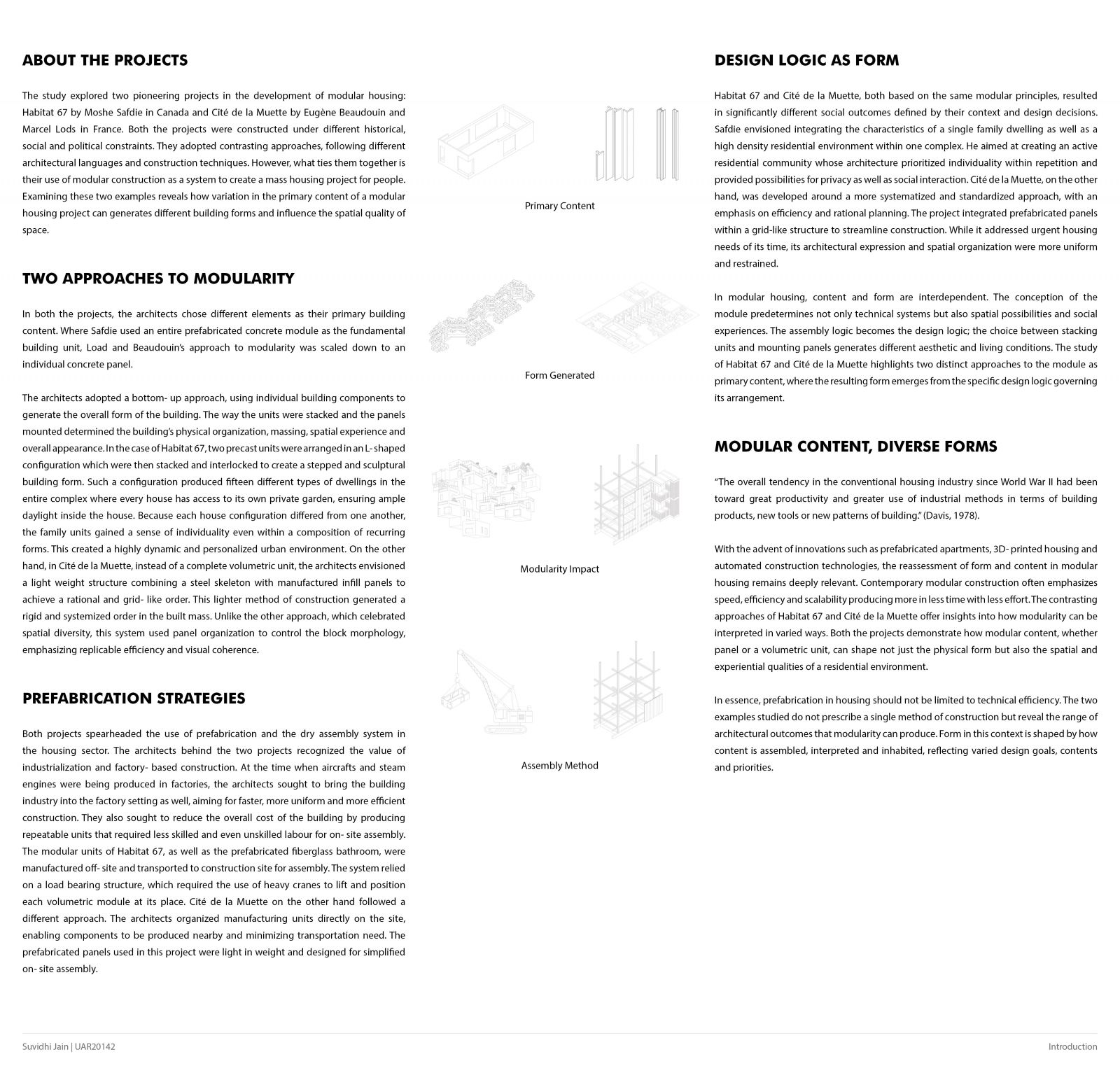Your browser is out-of-date!
For a richer surfing experience on our website, please update your browser. Update my browser now!
For a richer surfing experience on our website, please update your browser. Update my browser now!
This study explores the relationship between modularity and architectural form in housing design. It reassesses the idea that modular architecture is not merely about stacking units or serving as an efficient technical solution, but can represent a deeper architectural strategy where the content, that is the module itself, becomes the primary generator of form. By analysing the two cases of Habitat 67 by Moshe Safdie and Cité de la Muette by Eugène Beaudouin and Marcel Lods, the research explores how the nature, scale and the assembly of a modular content can shape the massing, spatial quality and social experience of a space. The study argues that modularity can play a significant role in shaping the identity of a building and that meaningful housing environments are created when this method of construction responds to the human needs rather than functioning merely as a technical and efficient solution of construction. With the advent of innovations such as prefabricated apartments, 3D- printed housing and automated construction technologies, the reassessment of form and content in modular housing remains deeply relevant. Thus, this study calls for a rethinking of prefabrication, not just as a construction method, but as a creative architectural tool to fabricate meaningful and livable environments
View Additional Work